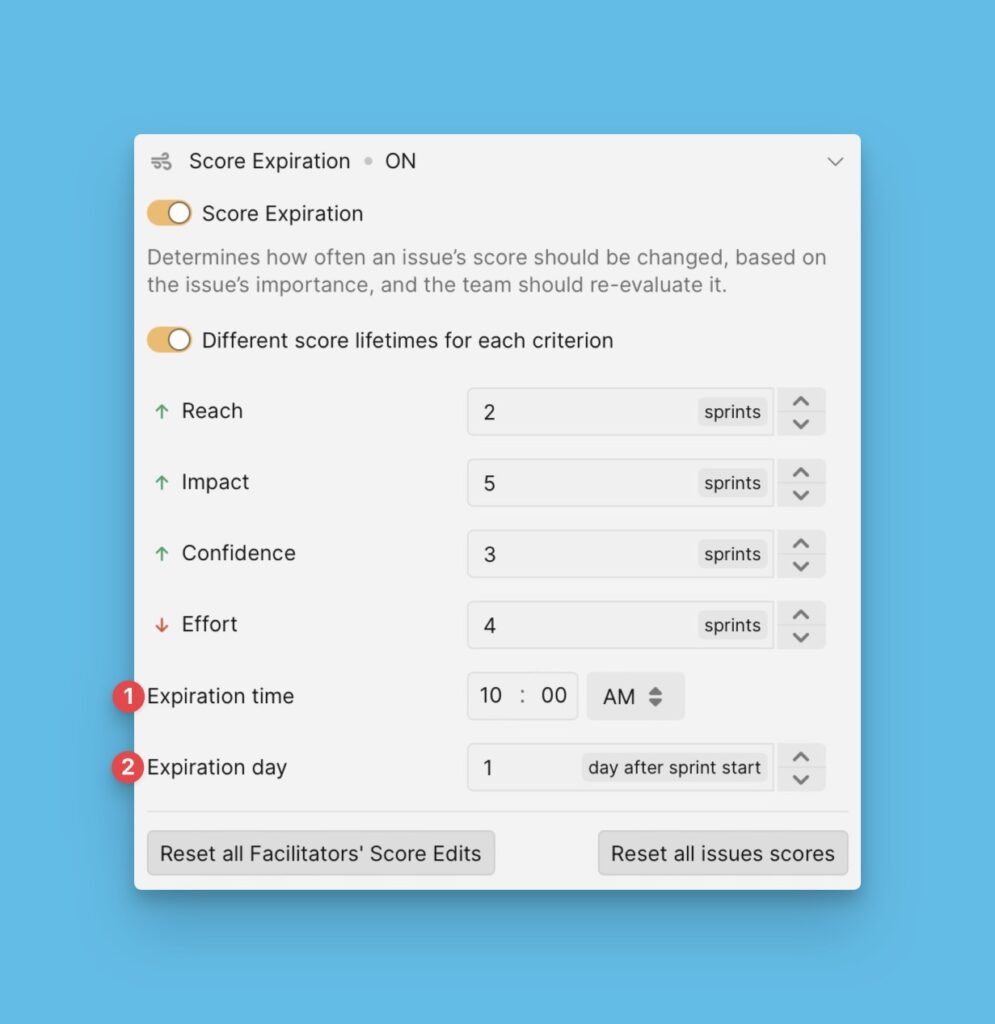To keep up with the constantly changing sprint goals, scores can be set to expire after a particular period, i.e. they are reset for the team to re-evaluate the backlog again.
This feature is switched off by default. To switch the setting on, just turn the toggle on.
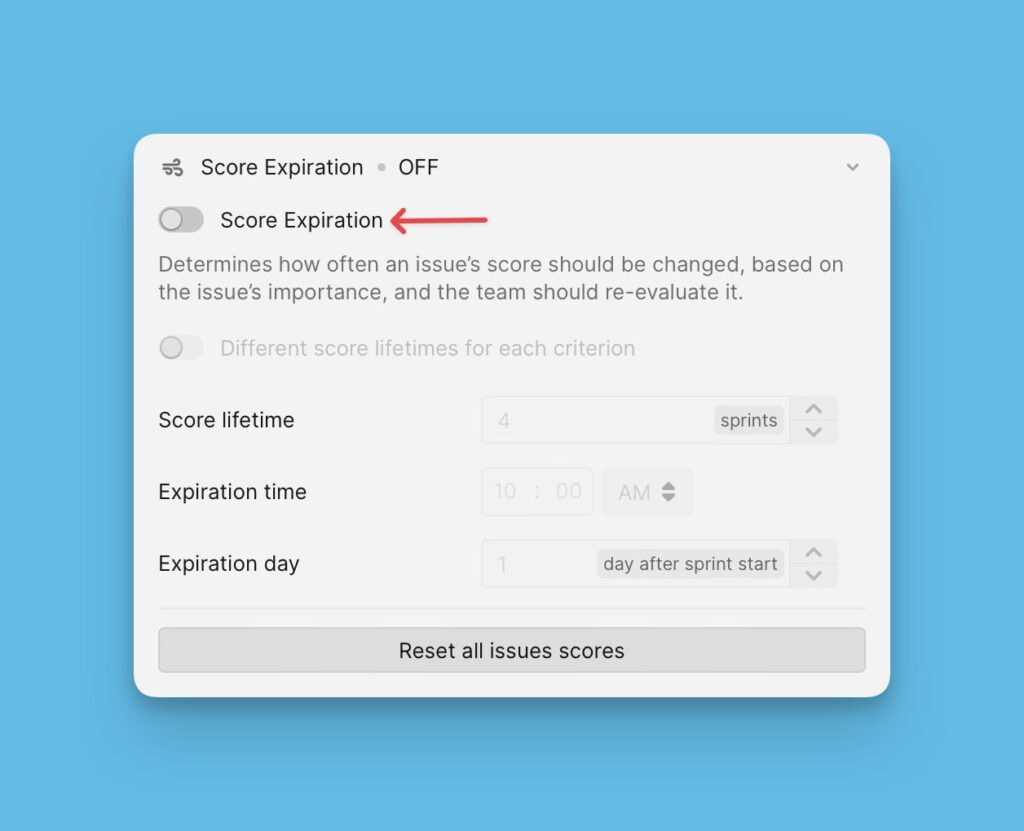
Setting Up Score Expirations
Score expiration settings are found under the “Evaluation Progress and Sprint Planning” settings.
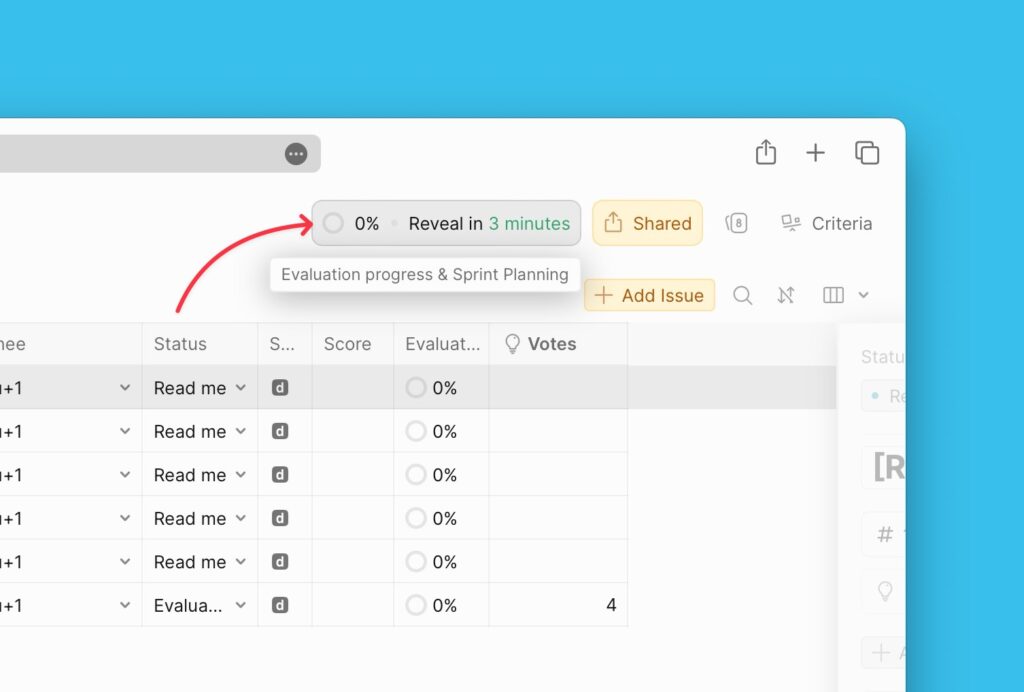
Under the Evaluation progress and sprint planning settings, scroll down to Final.

You have the option to:
- Set a single score lifetime for all the criteria in your prioritization framework.
- Set unique scores lifetimes for each criterion in your framework.
A Single Score Lifetime for all the Criteria
- If the feature is switched off, turn it on.
- Set your scores’ lifetime. The lifetime is expressed as sprints. If you know that your goals can extend for two more sprints, then you can set your scores’ lifetime to two more sprints.
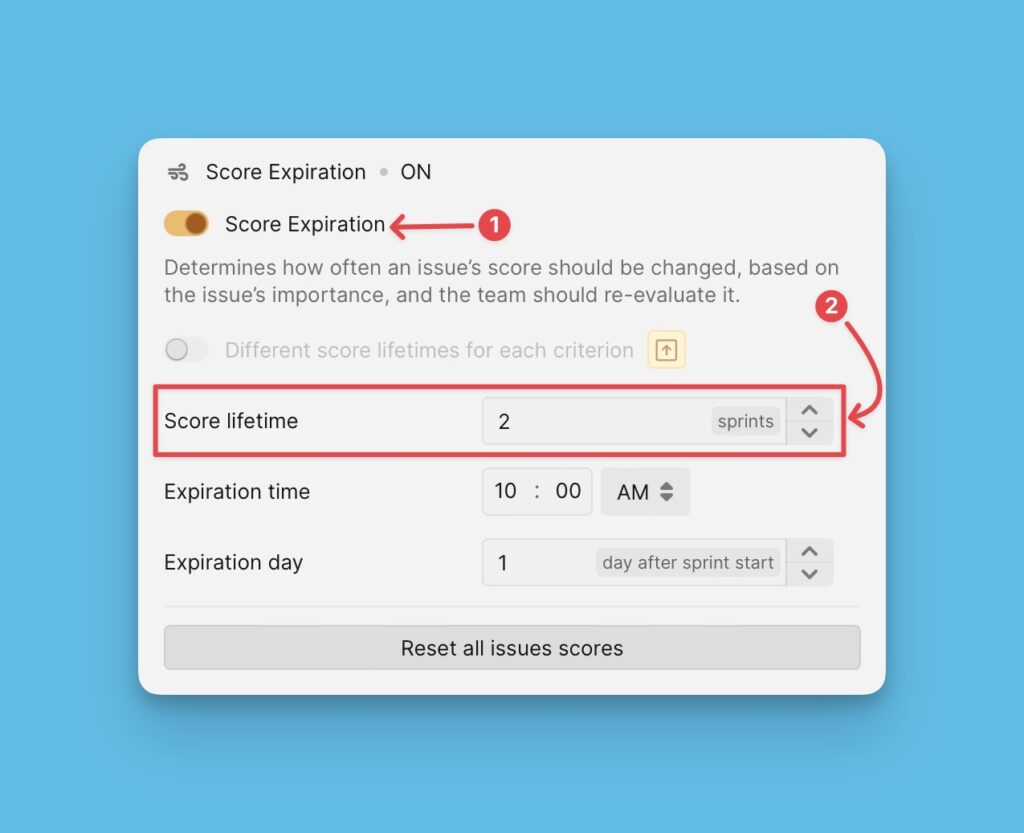
The score lifetime you set will affect the scores for all the criteria in your prioritization framework. Read more about where to find, and how to set up a prioritization framework.
Unique Score Lifetimes for each Criterion
You can set different score lifetimes for the criteria in your framework. This means that the criteria will be re-evaluated at different times.
Note that to use the feature, you need to be on the business plan.
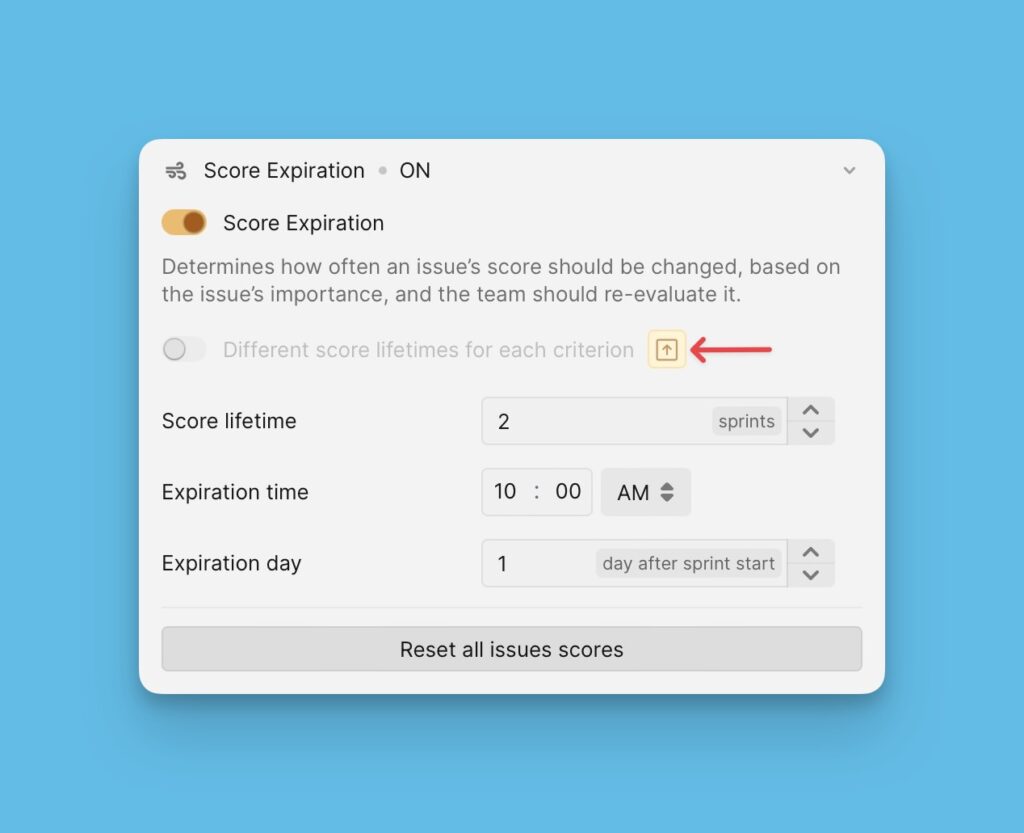
Put the score lifetime for each criterion according to how often they need to be re-evaluated.
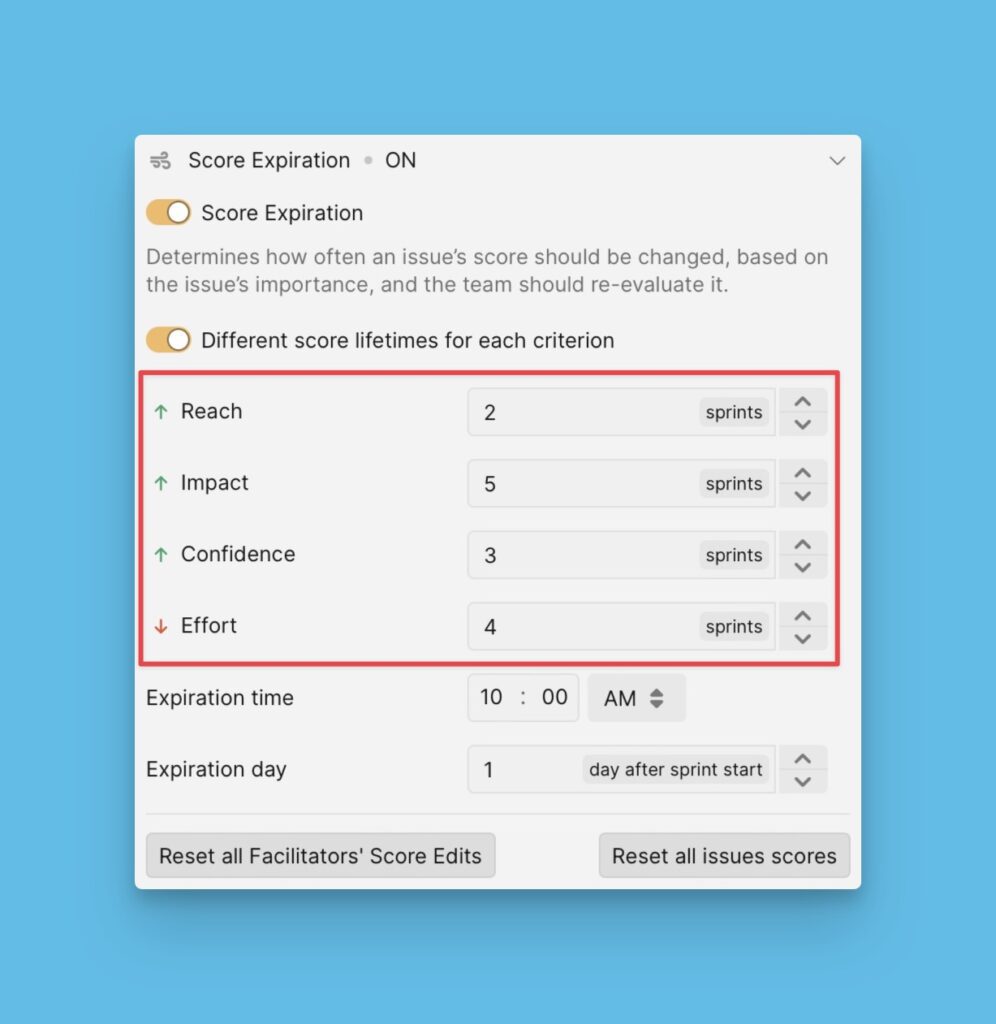
Set Time and Day of Score Expiration
- Expiration time – the time of the day you would want the score to reset.
- Expiration day – the number of days after the sprint starts you would want the scores to reset.
